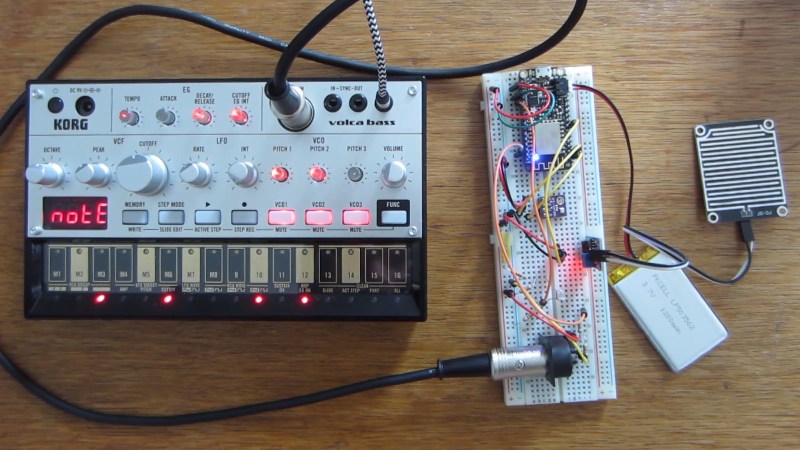People love to talk about the weather. It’s the perfect small talk, whether you’re trying to start a conversation or keep one going by avoiding an awkward silence. In the same fashion, weather stations are an ideal starting point for any sort of sensor-related project ideas. You get to familiarizing yourself with communication buses, ADCs, general data acquisition, and you learn a lot in figuring out how to visualize it all.
What if your weather station didn’t visualize anything? [OttoNL] is answering that question with a MIDI-generating Weather Station that uses the mood of the music to convey the condition of the elements outside.
Using an ESP8266 programmed via the Arduino IDE, [OttoNL] hooked up a light dependent resistor, a rain sensor, and the all-round workhorse BME280 for temperature, barometric pressure, and humidity to it. Reading the sensors, the ESP will generate MIDI notes that are sent to a connected synthesizer, with each sensor influencing a different aspect of the generated MIDI signals. A sadder, slow tune will play during rain and a fast upbeat one during sunshine. While it doesn’t use the ESP’s WiFi functionality at all at this point, a future version could easily retrieve some weather forecast data from the internet and add it into the mix as well.
Connect this to your alarm clock, and you can start your day off in the appropriate mood. You can even customize your breakfast toast to really immerse your morning routine in abstract weather cues.















You could attach this sensor to a toilet seat and make music while urinating.
How appropriate … I’m reading Sven’s story in the early morning as the sun comes out.
😂
I wanna see these as little weather stations you could tune into and listen to the beats by geographical location, tuning in over FM or even via the net. Now that would bring this up to 11.
I’d love to see a similar project, but connecting sensors to plants and using the Volca Bass as output. A DIY “Midi Sprout”!
Using a Davis Vantage weather station and an RFM69, we used the weather data to cue and spatialize some sound and vocal tracks depending on wind speed and direction. That was a pretty interesting project, there are still some nasty bugs and getting everything to work on a raspberry pi was definitely a challenge.
https://www.youtube.com/playlist?list=PLEPrOdi0brjaVjZfLzwd35lPrOpVZpBfC